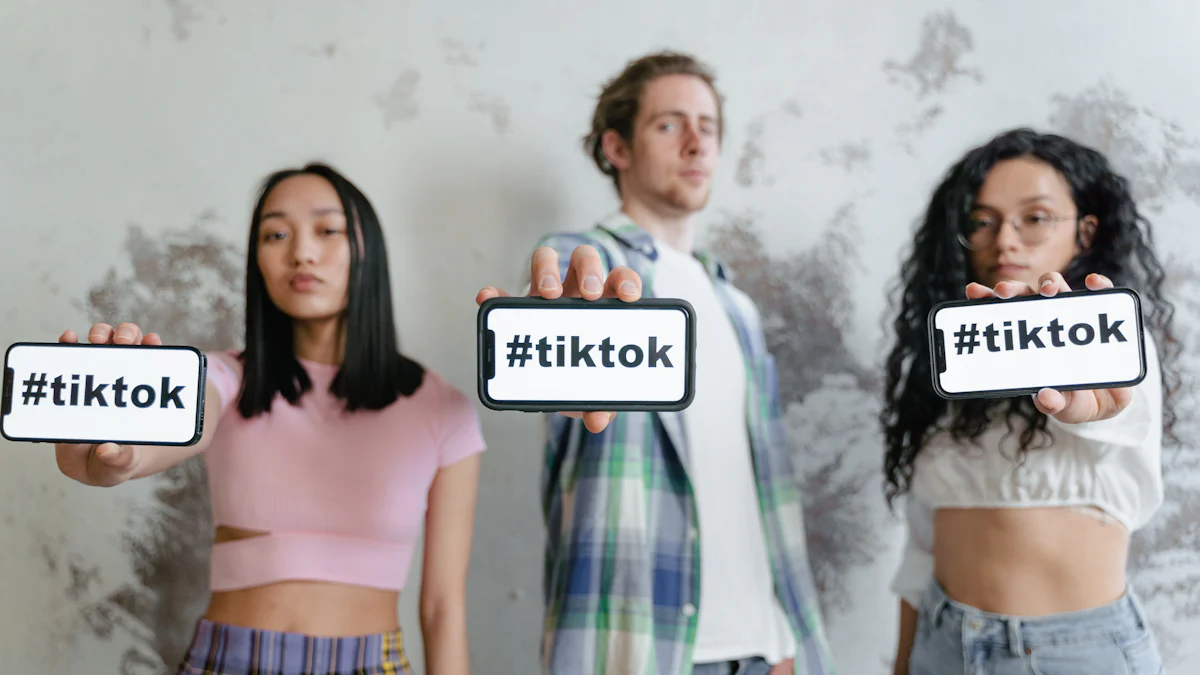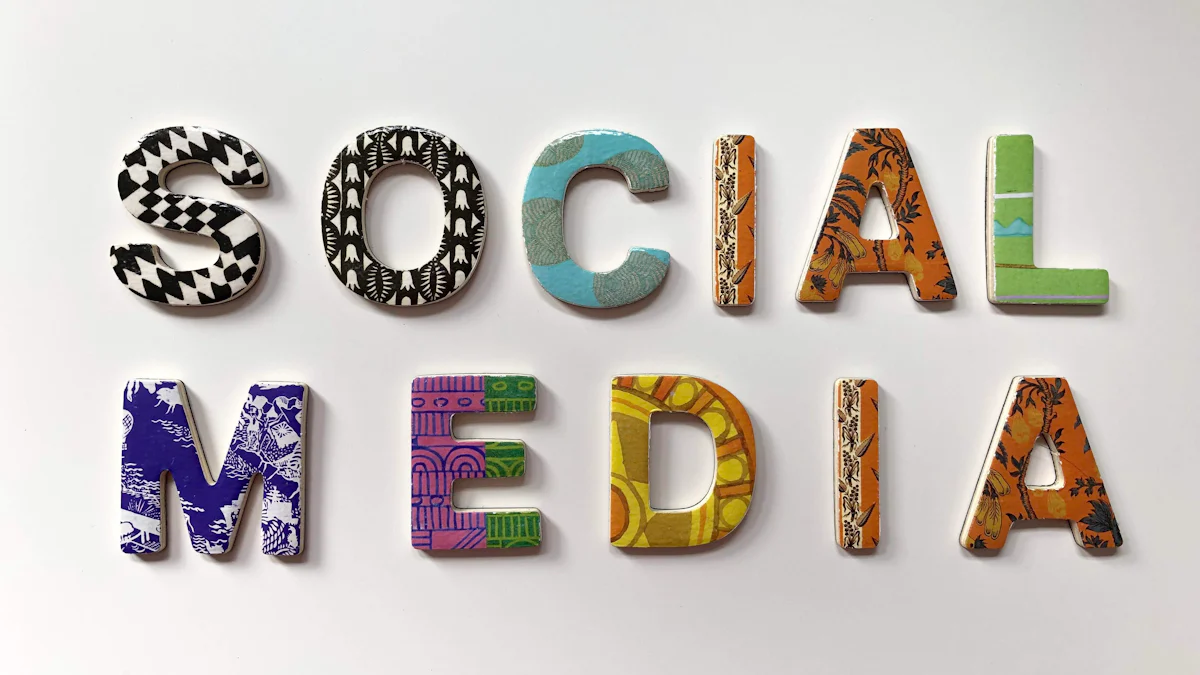Key Insights Driving Influencer Marketing Success in 2025

Social media influencer marketing continues to redefine how brands connect with their audiences. Over the years, it has shifted from celebrity endorsements to authentic collaborations with influencers who align with brand values. This evolution reflects a growing focus on data-driven strategies and niche engagement. Platforms like TikTok have further diversified the landscape, enabling brands to reach younger consumers in innovative ways.
The numbers speak for themselves. In 2025, brands are projected to spend $9.29 billion on influencer marketing, a 14.2% increase from 2024. Approximately 90% of marketers believe this approach is effective, while 72% agree it attracts higher-quality customers. These statistics highlight why understanding influencer marketing trends is crucial for staying competitive in today’s fast-paced digital world.
Emerging Trends in Influencer Marketing for 2025

AI and Automation in Influencer Marketing
AI-driven influencer discovery and campaign optimization
Artificial intelligence (AI) is revolutionizing influencer marketing by streamlining processes and enhancing decision-making. AI-powered platforms now help you identify influencers who align with your brand’s goals by analyzing metrics like engagement rates and audience demographics. This removes personal biases and ensures a more diverse selection of influencers. Predictive analytics also allow you to forecast an influencer’s future performance, enabling smarter partnerships.
AI doesn’t stop at discovery. It optimizes campaigns by brainstorming ideas, drafting content, and even generating visuals. Over 40% of marketers believe AI will transform the industry, making it essential for scaling campaigns and targeting niche audiences effectively. By automating repetitive tasks, AI frees up time for you to focus on creative strategies that resonate with your audience.
The rise of virtual influencers and their impact
Virtual influencers, powered by AI, are gaining traction in social media influencer marketing. These digital personas offer brands complete control over messaging while eliminating risks associated with human influencers. Virtual influencers can engage audiences 24/7, creating consistent and tailored content. As their popularity grows, you’ll see them playing a larger role in campaigns, especially in industries like fashion and technology.
Authenticity and Transparency in Influencer Marketing
Why audiences value genuine content over polished ads
Audiences today crave authenticity. They trust influencers who share genuine experiences over those promoting overly polished ads. Authentic content captures attention, builds credibility, and fosters meaningful connections. When influencers stay true to their values, their recommendations feel more relatable, encouraging followers to engage and make purchases.
The role of disclosure and ethical practices in building trust
Transparency is the cornerstone of trust in influencer marketing. Clear disclosure of sponsorships ensures your audience feels informed rather than deceived. Tags like “Paid Partnership with” not only comply with legal guidelines but also strengthen your brand’s reputation. Ethical practices, such as maintaining transparency in whitelisting and choosing authentic influencers, foster long-term relationships and enhance audience loyalty.
Niche Targeting and Micro-Influencers
The growing influence of micro and nano-influencers
Micro- and nano-influencers are reshaping the influencer marketing landscape. With engagement rates as high as 18%, they outperform macro-influencers, whose rates hover around 5%. Their smaller, focused follower bases allow them to connect authentically with audiences, making their endorsements more impactful. As brands shift budgets toward these influencers, you’ll find their cost-effective strategies ideal for driving engagement.
How niche communities drive higher engagement rates
Niche communities thrive on shared interests, and micro-influencers excel at engaging these groups. Their tailored content resonates deeply, creating trust and credibility. By targeting specific niches, you can achieve higher engagement rates and build stronger connections with your audience. This approach not only enhances your campaign’s effectiveness but also ensures your message reaches the right people.
Platform-Specific Growth in Social Media Influencer Marketing
TikTok’s continued dominance and new features for creators
TikTok remains a powerhouse in influencer marketing. Its short-form video format aligns perfectly with consumer preferences for quick, engaging content. You can leverage TikTok’s algorithm to reach highly targeted audiences, making it a valuable platform for brands. New features, such as enhanced analytics and creator tools, allow you to track performance and refine campaigns in real time.
TikTok also supports collaborations through its Creator Marketplace, where you can connect with influencers who match your brand’s goals. Short-form videos, like those on TikTok and Instagram Reels, are essential for capturing attention. These formats encourage creativity and storytelling, which resonate with younger audiences. By focusing on visually dynamic content, you can maximize engagement and build stronger connections with your audience.
LinkedIn’s rise as a hub for B2B influencer marketing
LinkedIn is emerging as a key player in B2B influencer marketing. Its professional network provides a unique space for creators to share insights and build authority. You can use LinkedIn to collaborate with thought leaders in your industry, enhancing your brand’s credibility.
The platform’s focus on long-form content and creator-driven posts makes it ideal for educating audiences. LinkedIn’s rise in creator content, especially in tech and B2B sectors, highlights its potential for influencer partnerships. By engaging with LinkedIn influencers, you can reach decision-makers and establish trust within your niche.
Emerging platforms to watch in 2025
New platforms are gaining traction, offering fresh opportunities for influencer marketing. Lemon8, for example, is expected to grow as a hub for visually dynamic storytelling. You can explore this platform to connect with niche audiences and experiment with creative formats.
Video-focused platforms like YouTube Shorts and Instagram Reels will continue to dominate. These platforms emphasize short-form videos, live streaming, and social commerce, which are essential for engagement. By staying ahead of these trends, you can position your brand for success in the evolving influencer marketing landscape.
Tip: Diversify your strategy by exploring emerging platforms early. This approach helps you stay competitive and reach untapped audiences.
Key Strategies for Influencer Marketing Success
Building Long-Term Partnerships with Influencers
Why long-term collaborations yield better ROI
Long-term collaborations with influencers offer several advantages for your brand. These partnerships enhance authenticity and credibility as influencers genuinely connect with your products over time. Consistent exposure to their audience increases the likelihood of conversions, while cohesive messaging strengthens your brand identity. You also benefit from cost-efficiency, as extended agreements often lead to better-negotiated rates.
Moreover, long-term influencer partnerships fuel word-of-mouth marketing. Followers who repeatedly see your brand are more likely to recommend it to others. Past campaign data from these collaborations makes it easier to predict performance, helping you set realistic goals and budgets.
Tips for fostering authentic relationships with influencers
Building authentic relationships with influencers requires effort and alignment. Start by ensuring your values and goals match theirs. Open communication is essential for defining expectations and roles clearly. Treat influencers as partners, not just contractors, by investing in relationship-building.
Allowing influencers creative freedom leads to more genuine content that resonates with their audience. Transparency about paid partnerships also builds trust with followers. This approach is crucial, as 69% of consumers trust influencer recommendations over direct brand messaging.
Leveraging Influencer Marketing Statistics and Data
Using analytics to measure campaign performance
Tracking influencer marketing statistics is vital for evaluating your campaign’s success. Metrics like engagement rates, click-through rates, and audience demographics provide insights into what works. For example, 90% of marketers believe influencer marketing is effective, while 72% agree it attracts higher-quality customers.
However, only 30% of marketers consider sales a measure of success. Instead, focus on metrics that reflect audience trust and engagement. These insights help you refine your strategy and allocate resources effectively.
Predictive tools for identifying trends and audience preferences
Predictive tools are transforming how you approach influencer marketing campaigns. These tools analyze past data to identify patterns and trends, helping you forecast which content styles and influencer partnerships will yield the highest engagement.
By spotting trends early, you can make informed decisions about influencer choices and campaign strategies. Predictive analytics also optimize campaigns in real-time, ensuring your efforts align with audience preferences. This data-driven approach enhances your ability to stay ahead in the competitive landscape of social media influencer marketing.
Creating Memorable and Interactive Campaigns
The importance of storytelling in influencer marketing
Storytelling is a powerful tool in influencer marketing. It fosters emotional connections, making your brand feel relatable and authentic. For instance, an influencer sharing their personal journey with a fitness product creates trust and loyalty among their followers.
Engaging narratives also encourage deeper audience interaction, increasing your campaign’s reach. Whether it’s a beauty influencer reviewing skincare products or a travel influencer documenting adventures, storytelling makes your content creation efforts more impactful.
How interactive content (e.g., polls, live streams) boosts engagement
Interactive content like polls and live streams enhances audience engagement by creating dynamic experiences. Live streams allow viewers to influence the content, making them feel involved. Polls and live chats gather real-time insights and feedback, keeping your audience actively engaged.
These interactive elements not only increase participation but also provide valuable data for refining your strategy. By incorporating such features into your influencer marketing campaigns, you can create memorable experiences that resonate with your audience.
Industry-Specific Applications of Influencer Marketing

Fashion and Beauty
Leveraging influencers for product launches and tutorials
Influencers have become essential for fashion and beauty brands launching new products. They connect authentically with audiences, build trust, and drive engagement. For example:
| Key Benefit | Description | |------------------------|-----------------------------------------------------------------------------| | Reaching Target Market | Collaborating with influencers allows brands to connect authentically with potential customers. | | Building Brand Trust | Influencers lend credibility to brands, enhancing their reputation. | | Driving Engagement | Influencers create content that resonates, converting audiences into customers. |
In 2025, you’ll see influencers shaping product strategies beyond just promotions. Many brands now involve influencers in product testing phases. This fosters authenticity and ensures products align with audience preferences. Positive endorsements from influencers also resonate strongly with Gen Z, enhancing brand reputation and loyalty.
The role of sustainability and inclusivity in campaigns
Sustainability and inclusivity are reshaping the fashion and beauty industries. Influencers who advocate for eco-friendly practices and diverse representation resonate deeply with modern consumers. By partnering with influencers who champion these values, you can align your brand with ethical trends. This approach not only builds trust but also attracts socially conscious audiences.
Travel and Hospitality
How influencers are reshaping travel experiences post-pandemic
Travel influencers now act as trusted advisors, especially micro- and nano-influencers who connect with niche audiences. They emphasize authenticity and education, focusing on sustainable and socially responsible travel. Post-pandemic, travelers seek safe and ethical options. Influencers who provide practical advice and insights into responsible tourism significantly shape travel experiences.
The importance of immersive content (e.g., VR, AR) in travel marketing
Immersive technologies like VR and AR are transforming travel marketing. These tools create interactive experiences that captivate audiences. For example:
- VR and AR enhance consumer engagement by offering virtual tours of destinations.
- They integrate digital content with traditional materials, such as brochures, for better interaction.
- Virtual experiences attract potential travelers, making them a key trend in future travel advertising.
By incorporating these technologies into your campaigns, you can inspire wanderlust and drive bookings.
Technology and Gaming
Collaborating with gaming influencers for product promotions
Gaming influencers are driving product promotions in the tech and gaming industries. Their impact is evident in campaigns like Sony’s PlayStation 5 launch, which achieved record pre-orders through collaborations with creators. Other examples include:
- Asus ROG saw a 35% increase in product inquiries by using Twitch streamers.
- Corsair boosted online sales by 40% with TikTok videos featuring gaming peripherals.
- MSI partnered with esports teams, leading to a 20% sales increase and greater brand awareness.
These partnerships highlight how gaming influencers can amplify your product’s reach and credibility.
The rise of tech influencers in educating audiences
Tech influencers simplify complex innovations, making them accessible to everyday consumers. They excel at creating engaging content like unboxing videos, tutorials, and live demonstrations. By partnering with tech influencers, you can educate your audience about new products while building trust and driving adoption.
Health and Wellness
Partnering with wellness influencers for authentic storytelling
Wellness influencers excel at creating authentic connections with their audiences. They achieve this by sharing personal stories that highlight their mental, emotional, and physical wellness journeys. These narratives resonate deeply with followers, fostering trust and credibility. You can leverage this authenticity to humanize your brand and make it more relatable.
When influencers incorporate compelling narratives into their content, they can create deeper emotional connections with their followers. Storytelling in influencer marketing engages, captivates, and also humanizes both the brand and the influencer, making them more relatable and memorable.
Self-care influencers often focus on themes like mindfulness, fitness, and healthy living. By collaborating with them, you can align your brand with these values. Their ability to weave personal experiences into campaigns ensures your message feels genuine rather than promotional.
- Self-care influencers promote mental, emotional, and physical wellness.
- They emphasize authenticity by sharing personal stories and experiences.
- This approach fosters a sense of credibility and trust among their followers.
To maximize impact, encourage influencers to share how your product or service has positively influenced their lives. This strategy not only builds emotional connections but also enhances your brand’s reputation as a trusted partner in wellness.
The impact of regulatory guidelines on health-related campaigns
Health-related influencer marketing operates under strict regulations. You must ensure compliance to maintain credibility and avoid legal issues. Influencers must disclose their partnerships clearly, using terms like “#ad” or “Sponsored.” Transparency is essential for building trust with your audience.
- Healthcare influencers must disclose their connections to brands.
- They should avoid making exaggerated or misleading claims about medical products or treatments.
- Influencers must protect patient privacy in accordance with HIPAA regulations.
Influencer marketing in healthcare is subject to various regulations, including but not limited to the Health (HIPAA) Insurance Portability and Accountability Act and the (FDA) Food and Drug Administration guidelines in the United States and the (GDPR) General Data Protection Regulation of the European Union. Both healthcare companies and influencers must be well-informed about these regulations to ensure the appropriate handling of personal health information and compliance with advertising and promotional rules.
By adhering to these guidelines, you can ensure your campaigns remain ethical and effective. Educating influencers about these rules will help you maintain a professional and trustworthy image in the health and wellness industry.
The influencer marketing landscape in 2025 will revolve around authenticity, AI-driven strategies, and the dominance of video content. Micro- and nano-influencers will lead campaigns with their highly engaged audiences, while social commerce will become a standard practice. To stay ahead, you must rely on data-driven insights. For instance, 90% of marketers find influencer marketing effective, and 69% of consumers trust influencer recommendations.
Adapting to these trends requires clear goals, the right influencer partnerships, and a focus on authentic storytelling. By embracing innovation and staying flexible, you can ensure your brand thrives in this evolving digital space.
FAQ
What is the difference between micro- and nano-influencers?
Micro-influencers have 10,000–100,000 followers, while nano-influencers typically have fewer than 10,000. Nano-influencers focus on niche communities and achieve higher engagement rates. Micro-influencers balance reach and authenticity, making them ideal for campaigns targeting specific audiences.
How can you measure the success of an influencer marketing campaign?
Track metrics like engagement rates, click-through rates, and conversions. Use analytics tools to evaluate audience demographics and campaign performance. Focus on metrics that reflect trust, such as comments and shares, rather than just follower counts.
Are virtual influencers better than human influencers?
Virtual influencers offer complete control over messaging and avoid risks like scandals. However, human influencers provide authenticity and emotional connections. Your choice depends on your campaign goals and audience preferences.
Why is authenticity important in influencer marketing?
Audiences value genuine content because it feels relatable and trustworthy. Authentic influencers build stronger connections with their followers, increasing engagement and conversions. Avoid overly polished ads to maintain credibility.
Which platforms should you prioritize for influencer marketing in 2025?
Focus on TikTok for short-form videos, LinkedIn for B2B campaigns, and emerging platforms like Lemon8. Diversify your strategy to reach untapped audiences and stay ahead of trends.
Tip: Experiment with multiple platforms to identify where your audience engages most actively.
See Also
Key Influencer Marketing Trends To Follow In 2024
Practical Influencer Marketing Data For Effective Strategies
Grasping The Return On Investment In Influencer Marketing
Essential 15 Influencer Marketing Platforms For 2024
20 Crucial Influencer Marketing Statistics Every Marketer Should Know
